Last Updated on September 29, 2022 by Rupesh Patil
Like any electronic or mechanical device, your fridge will also have problems from time to time. Most of these will have easy fixes, and will be covered under manufacturer or extended warranty.
Some of the problems you can take care of at home before you call a serviceman and some will require a professional to fix. However, in some cases a refrigerator problem may not be easy to fix and replacements may be required. Here are the most common refrigerator problems and what you can do about them.
Subscribe to Onsitego
Get the latest technology news, reviews, and opinions on tech products right into your inboxHere are some common refrigerator problems and how to fix them on your own.
Refrigerator Problem #1: Fridge Not Cooling
This is probably the most common problem people face, and the reasons for this are as follows (ordered as most likely to least likely)
- Condenser coils are dirty – If the condenser coils at the back of your fridge are visible, they can collect dust/cobwebs and be too dirty to work properly. Clean them thoroughly and check if the problem is fixed.
- Evaporator Fan Motor not working – If the evaporator fan motor is not working, it will not circulate cold air in the fresh foods compartment. You may need professional help to replace or repair the motor.
- Condenser Fan Motor – If the condenser fan motor is not working, it will not draw air through the condenser coils and over the compressor. You will need professional help to replace or repair the motor.
- Start Relay – If the start relay is faulty, the compressor may fail to start at all. You will need professional help to replace or repair the start relay.
- Temperature Control Thermostat – If the temperature control thermostat is not working, it will not supply voltage to the compressor, evaporator fan motor, and condenser fan motor (if applicable). You will need professional help to replace or repair this.
- Start Capacitor – A faulty Start Capacitor will not let your compressor start. You will need professional help to replace or repair the start capacitor.
- Thermistor – If the thermistor is defective, the compressor and evaporator fan may not run when necessary. You will need professional help to repair or replace the thermistor.
- Temperature Control Board – If the temperature control board is defective, it will stop sending voltage to the cooling system. You will need professional help to fix the problem.
- Compressor – The compressor is a motor which compresses the refrigerant and circulates the refrigerant through the evaporator and condenser coils. If the compressor is not working, the refrigerator won’t cool. However, this isn’t usually the case. Before replacing the compressor, first check all of the more commonly defective components. If all of the other components are working properly, call for professional help.
- Main Control Board – The main control board might be defective. But because this is the least likely cause, before replacing the main control board, test all of more commonly defective parts. If none of the other components are defective, consider having the main control board replaced.
Refrigerator Problem #2: Fridge Not Defrosting
This is the second most common problem, and the causes are ordered from the most likely to least likely to occur.
- Defrost Control Board – If the board fails, the refrigerator will not go into the defrost cycle. You will need professional help to diagnose and replace this.
- Defrost Timer – If the defrost timer is defective, it may not advance into the defrost cycle, or it may not send power to the defrost heater during the defrost cycle. This may need replacement.
- Defrost Heater Assembly – If the defrost heater assembly is defective, the defrost system will not work, and frost will continue to accumulate on the evaporator coils. This may need replacement.
- Defrost Thermostat – If the defrost thermostat is defective, the thermostat contacts will not close to allow power to flow to the defrost heater. You will need professional help to fix this.
- Defrost Sensor with Fuse – If the defrost sensor fuse blows, the defrost system will not work, and the refrigerator will not defrost. The defrost sensor fuse cannot be reset and needs to be replaced in case of fault.
- Main Control Board – If the main control board is defective, it may stop sending voltage to the defrost system. This has to be replaced.
Refrigerator Problem #3: Freezer is Cool, but Fridge Stays Warm
When this happens, the freezer remains cool, but the fresh foods compartment does not cool or stays warm. The problem that might cause it is listed in order of likelihood of occurrence:
- Evaporator Coils are Frosted Over – If the defrost heater assembly is defective, frost will continue to accumulate on the evaporator coils, and the coils will become plugged with frost. A professional will fix this for you.
- Evaporator Fan Motor – If the evaporator fan motor is not working, it will not circulate cold air in the fresh foods compartment. You may need professional help to replace or repair the motor.
- Damper Control Assembly – If the damper does not open properly, it won’t let enough cold air into the refrigerator. Check the damper control to determine if it is broken or stuck closed.
- Thermistor – If the thermistor resistance does not change, or the thermistor does not have continuity, replace the thermistor.
- Temperature Control Board – If the control board is faulty, it may stop sending voltage to the compressor or fan motors.
- Defrost Control Board – If the defrost control board fails, the refrigerator will not run the defrost cycle, and frost will continue to accumulate on the evaporator coils.
- Defrost Timer – If the defrost timer is defective, it might not advance into the defrost cycle, or it might not send power to the defrost heater during the defrost cycle. If the defrost system isn’t working, frost will continue to accumulate on the evaporator coils, and the refrigerator will have to work harder to remove heat. As a result, the refrigerator may be too warm.
- Defrost Thermostat – If the defrost thermostat is defective, the thermostat contacts will not close to allow power to flow to the defrost heater during the defrost cycle. As a result, the thermostat won’t provide power to the defrost heater.
- Main Control Board – The main control board might be defective. But because this is the least likely cause, before replacing the main control board, test all of more commonly defective parts. If none of the other components are defective, consider having the main control board replaced.
Refrigerator Problem #4: Fridge Leaking Water
There might be multiple reasons why this is happening, and the causes, in order of how commonly they occur are:
- Clogged or Freezing Defrost Drain – If the defrost drain is frozen, the water will overflow the drain trough and trickle down to the bottom of the compartment from where it can eventually leak onto the floor. Check the defrost drain to determine if it is clogged or frozen. If the defrost drain is frozen, thaw the ice. In addition, flush the drain with hot water to ensure that it is clear of debris.
- Water Tank Assembly – Inspect the water tank assembly for any leaks that is causing the water to flow out. The leak may be very small and hard to find. If you discover a leak, replace the water tank. Do not attempt to repair the water tank—glue will not stick properly to the plastic of the tank. This requires professional help.
- Water Inlet Valve – If the water inlet valve is cracked or has a loose fitting, water will leak from the valve. Inspect the water inlet valve for cracks, and make sure that it is tightly secured to the water supply line.
- Water Filter Housing – Inspect the water filter housing for cracks. If you discover any cracks in the water filter housing, replace the housing.
- Water Filter Head – The water filter head might be cracked, or the seal may be torn or missing, causing the leak. If this happens, replace it.
- Drain Pan – If the drain pan is cracked, it will leak water as the defrost cycle is running. Replace it if you see a crack.
Refrigerator Problem #5: Fridge Freezing Food
The freezer is meant to freeze food, while the fresh foods compartment should keep the food cool. But if you see ice crystals in food kept in the fresh foods compartment, in order of likelihood, these might be the problem:
- Temperature Control Thermostat – If the temperature control thermostat is not working properly, it may cause the refrigerant system to run longer than necessary and the refrigerator will be too cold. Check at the lowest setting and if this is still happening, call for help.
- Thermistor – If the thermistor is defective, the compressor and evaporator fan may run too frequently and the refrigerator will be too cool. This may need replacing.
- Temperature Control Board – If the control board is faulty, it may send continuous voltage to the compressor or fan motors. A repairman can diagnose this problem and fix it.
- Main Control Board – The main control board might be defective. But this is a very rare occurrence, and you must make sure the other systems are checked thoroughly for faults. If none of these components is defective, consider replacing the main control board.
- Damper Control Assembly – The air damper control opens and closes to let the proper amount of cold air into the refrigerator compartment. If the damper does not close properly, it will let too much cold air into the refrigerator.
- Damper – The damper opens and closes to let the proper amount of cold air into the refrigerator compartment. If the damper is stuck open, it will let too much cold air into the refrigerator. As a result, the refrigerator will be too cold. Check the damper to determine if it is broken or stuck open.
Refrigerator Problem #6: Light Not Working
The light in the fresh foods compartment helps you see inside. But this is also prone to damage.
In most cases it is the light bulb that is defective, and simply replacing it will do the trick. In case of LED strips or the light still not working after replacement, it is likely that the light board or socket has a problem, and is best checked by a professional.
These refrigerator problems might strike any time after you purchase the appliance. While manufacturer warranty will cover repairs for up to a year, any repairs after that time will be costly. However, if you purchase an extended warranty, your fridge will be protected for longer, and repairs or replacements can be done by authorised service persons.




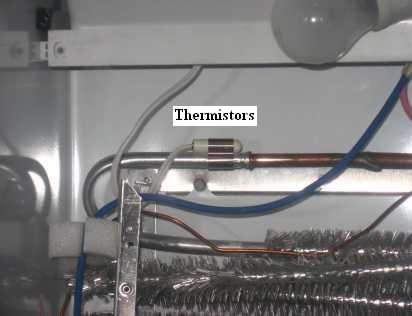
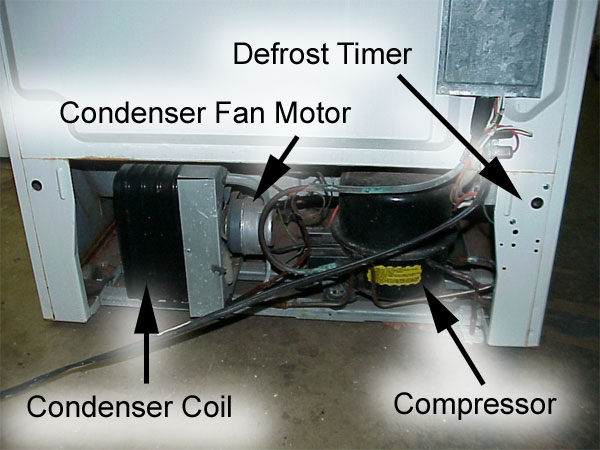
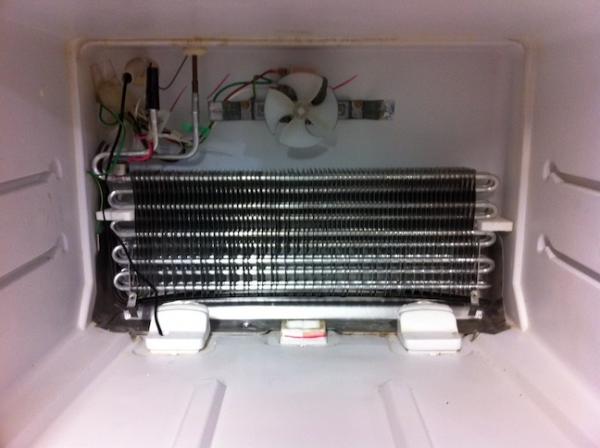


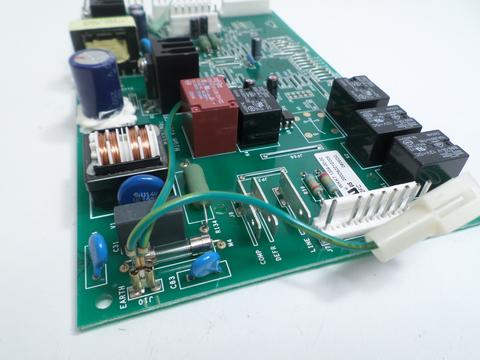
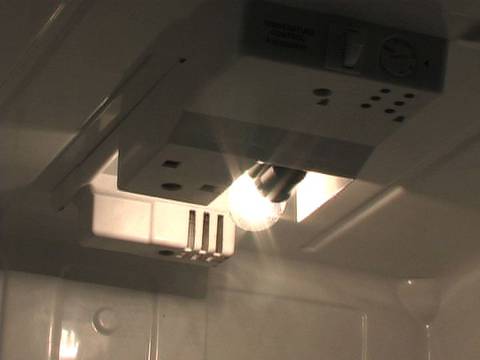
Discussion about this post